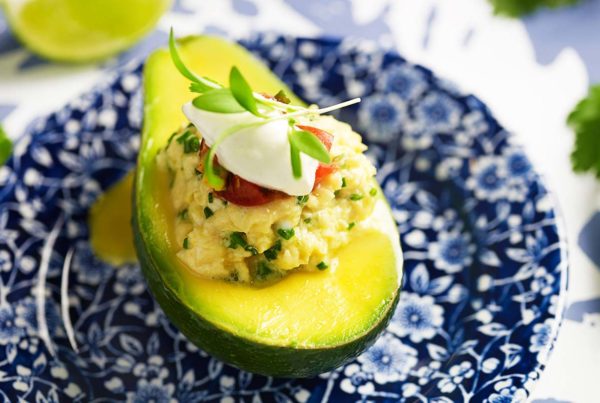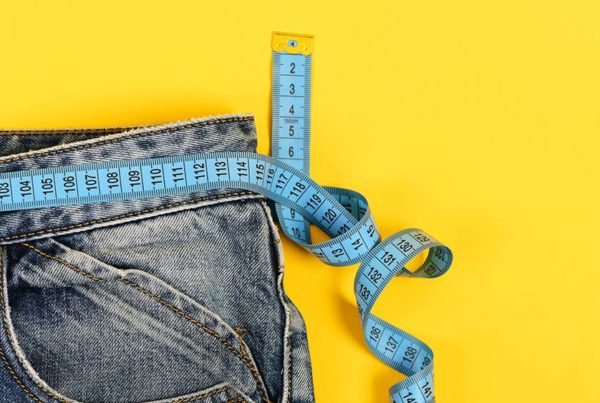
A personalized alternative for healthy eating
Many are familiar with my Two-Week Test, a self-care method to help personalize your eating routine through a low- or very-low carb experience. It not only significantly increases fat-burning, but ketone production as well, so among the metabolic benefits are body-fat reduction, weight loss, reduced hunger and cravings, increased energy and more. I developed this test in the early 1980s to help patients find their own unique balance to personalize health and fitness.
Many have also asked whether the Two-Week Test promotes the high state of high fat-burning called nutritional ketosis. Sometimes it does, but it’s not the specific goal. That’s the purpose of this article. Ketosis is a state in which the body is relying on high amounts of fat for energy, along with ketones, a fuel source the body converts from stored fat.
The Two-Week Test is sometimes referred to as a diet, but it’s not. Instead, it’s more like a test drive for your metabolism. While it’s meant to be the start of life-long healthy eating, many people use it to recharge their habits, especially after holidays, binges or when sugar addiction rears its ugly head.
Just how will you feel when avoiding sugar and other junk food? And, just how much natural carbohydrates can your body tolerate? These are some of the questions you are able to answer after the Two-Week Test, which includes a follow-up period of experimenting with carefully adding natural carbohydrates to your meals and snacks. You can read the full Two-Week Test here, or come back to it after finishing this article.
Two-Week Keto Test
For those wanting to experience ketosis, the Two-Week Test can easily be tweaked to ensure 50 grams or less of carbohydrates are consumed, making it the Two-Week Keto Test. You follow the same plan, but consume no more than 50 grams of carbohydrates each day.
Below is a sample menu. Call this a very low-carb, high fat-burning eating plan, or formula for nutritional ketosis. Or perhaps simply call it “the best way to eat for my personal needs,” if that’s how it turns out — it’s how humans ate for millions of years.
Just please don’t call it a diet.
This one-day menu will quickly jump-start your metabolism — for most people, quickly triggering nutritional ketosis. This menu contains 2,000 calories, so adjust it to your own particular needs, and substitute for convenience. Just make sure you don’t exceed 50 grams of carbohydrates.
Breakfast
Midmorning
1-2 Eggs with sautéed zucchini (cooked in butter) with fresh tomatoes.
Lunch
Salad of mixed raw vegetables with a half avocado and 3-4 ounces raw or lightly cooked wild salmon in butter. Extra virgin olive oil and vinegar.
- 1-2 whole eggs
- Raw vegetables (1 serving each: spinach, carrot)
- Raw sesame seeds, 1 teaspoon
- ¼ cup blueberries
- 3-6 oz. water
Dinner
- Cooked broccoli in butter and garlic
- 4 oz. beef, lamb, duck, chicken
- If desired and tolerated, 4 oz. dry red wine options: one drink of Tequila, Gin, Vodka, Whiskey).
Other keto-type recipes can be found in the Two-Week Test Recipe section.
The Keto Transition Timetable
Like any change in habits, whether dietary, exercise, or moving to a new home, the brain and body must adapt. The better we transition through this fat adaptation, the better we feel and function. Making any major dietary change, even from a bad diet to healthy eating, requires this transition.
This process of adapting to nutritional ketosis is no exception, and often produces various signs and symptoms along the way, that can be mild to seemingly extreme. However, it’s not dangerous and you can avoid the extremes (see the list below). Much of this centers on sugar addiction and withdrawal from it.
The transition timetable is due to the physical, biochemical and mental-emotional stress the body is going through. Fortunately, it’s relatively easy to speed through this process, and tame it. Here are some key ways:
- Know what foods you can eat, and have them readily available to avoid disrupting the process by mistakenly eating bad foods. After eliminating unhealthy foods, you may wonder just what’s left to eat — there’s plenty as you see from the above menu, the Two-Week Test articles, and the recipes. Planning and shopping ahead is most important!
- Strictly avoid foods you should not eat, especially sugar and other junk food. Even a bite of bad food here and there could delay the transition.
- Eat smaller meals or snacks every 2-4 hours, which provides regular nourishment.
- Important: Eat enough at each meal or snack to avoid hunger.
- Eat within a half-hour of waking. Phil’s Fat Burning Coffee is a great start to the day.
If you have acute withdrawal symptoms, they typically begin subsiding soon. After 2-3 days, when hunger also begins to wane, you may be through the worst of it. During this period, some people feel physically and mentally uncomfortable, from body- and head-aches to fatigue. You might even feel like you have the flu (the process is sometimes called the keto flu). For those who still feel bad after a few days or week, it’s usually due to not eating enough of the right food, eating too infrequently, or unknowingly eating foods that should be avoided. (Restaurant and take-out food typically has sugar or other hidden ingredients that must be avoided.)
Over the coming weeks, the cravings for sweets grow less and less. But sugar has such a grip on the brain that it will take much longer, months to years, before you can pass the bakery test — when walking by one causes disgust. Or when you see a plate of your favorite dessert somewhere. In fact, by this point actually tasting an old favorite is shockingly sweet and repulsive.
Older studies that tested very low-carb with traditional high-carb diets in athletes showed very poor performance in the low-carb group. However, these subjects were not allowed to adapt to the dietary change. Newer studies that test athletes only after adaptation showed they perform well, or even better, than the traditional high-carb athletes.
We all have slightly different dietary needs, one that, like all animals, we instinctively find. The Two-Week Keto Test can be the first step in helping us do that.







